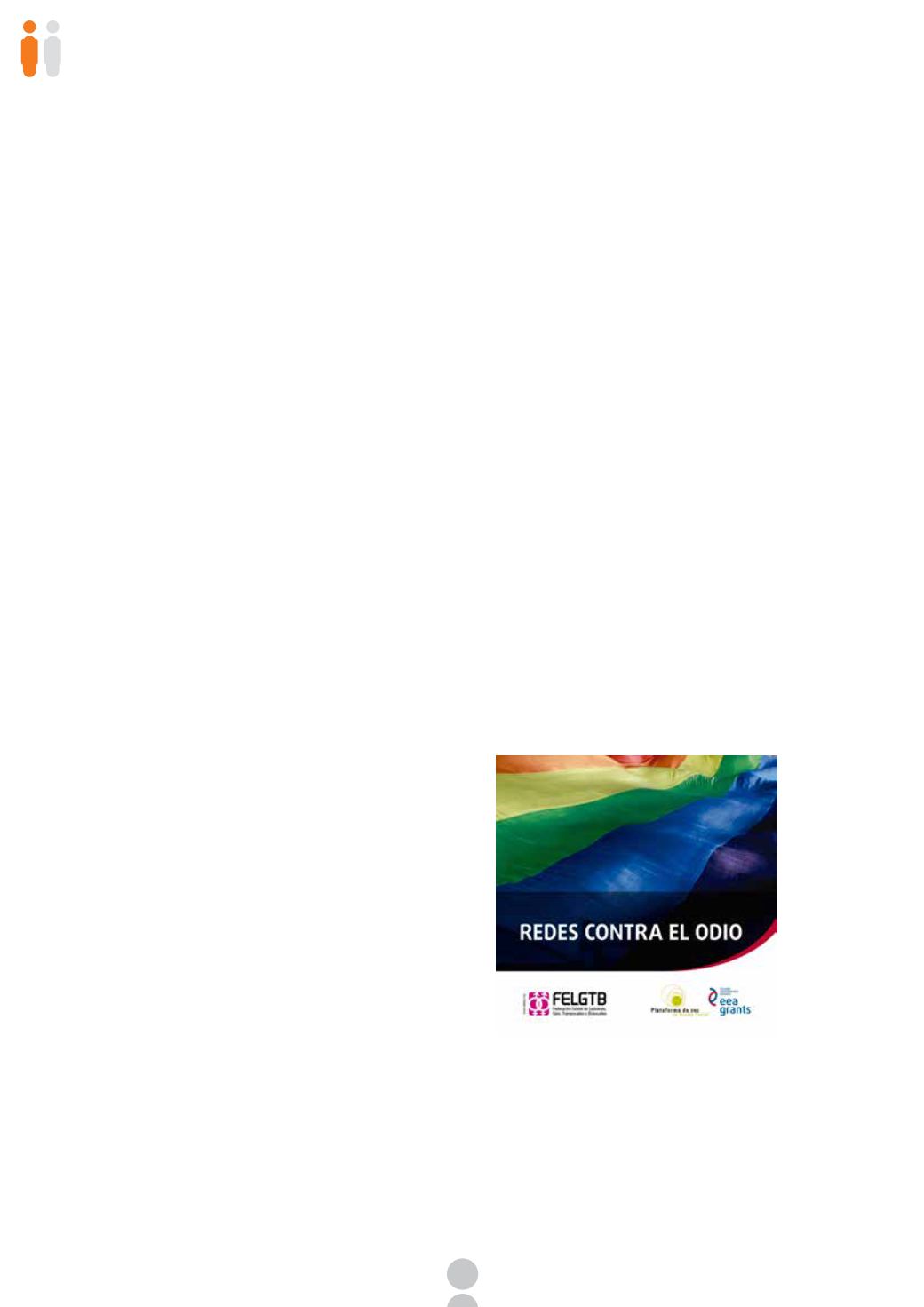

108
Discrimination and the Roma community, 2015
Networks combating hatred. FELGTB
Summary
The Networks Combating Hatred project brings gov-
ernment administrations, prosecutors, security forces,
civil society and the media together with a view to
making a coordinated response to hate crimes and dis-
crimination suffered by LGTB persons. The programme
focuses on gathering evidence, social awareness-rais-
ing, promoting legislative advances and helping victims.
It has a subsidy of EUR 138 000 from Iceland, Liechten-
stein and Norway through EEA funds and implemented
its initiatives between May 2014 and September 2015.
Background
Hate crimes and discrimination based on sexual orien-
tation and gender identity are enormously widespread
and engrained in our society. This is why many vic-
tims don’t even realise that they are victims and why
aggression is even justified with expressions such as
“they had it coming to them”.
Over 80% of the hate crimes against LGTB persons
go unreported . Among possible reasons are fear of
being recognised as an LGTB person by those in their
immediate environment, re-victimisation or fear of be-
ing blamed for the acts reported and not perceiving the
aggression as a crime.
In one way or another, a large proportion of hate crime
perpetrated against LGTB persons goes unpunished.
Seventy percent of LGTB persons report having suf-
fered homophobic violence at least once. The fact that
this violence is accepted as ‘normal’ leads the 61% who
do not report this sort of violence to feel that it is not
so important. One of the biggest problems is the lack
of surveillance systems and systematised quantita-
tive data collection by police and prosecutors and also
NGOs so as to be able to gauge the breadth of hate
crimes based on sexual orientation and gender identi-
ty. The lack of coordination between different agents
involved in responding to discrimination and hate crime
make the problem even more invisible insofar as it is im-
possible get a complete view of the events reported .
In addition to under-reporting, computer systems are
not designed to register this type of complaint. Many
of the variables needed to accurately record these in-
cidents when they are motivated by a person’s sexual
orientation or gender identity are missing. However, the
real basis of the problem is ignorance of the acts con-
stituting discrimination on the basis of sexual orientation
or gender identity and of the indicators pointing to the
presence of homophobia or transphobia as an aggra-
vating circumstance in these crimes. In many cases, the
victims are unaware of the procedure they need to fol-
low in lodging a complaint and police and prosecutors
are unfamiliar with what the aggravating circumstances
are for homophobia and transphobia. Furthermore, few
people are aware of the support and guidance provided
for victims of discrimination and hate crime by LGTB
organisations; moreover, their response capacity has
been declining due to lack of resources.
All of this increases mistrust on the part of victims in
the capacity of the institutions and NGOs to meet their
needs while and also promotes the impunity of the ag-
gressors.



















